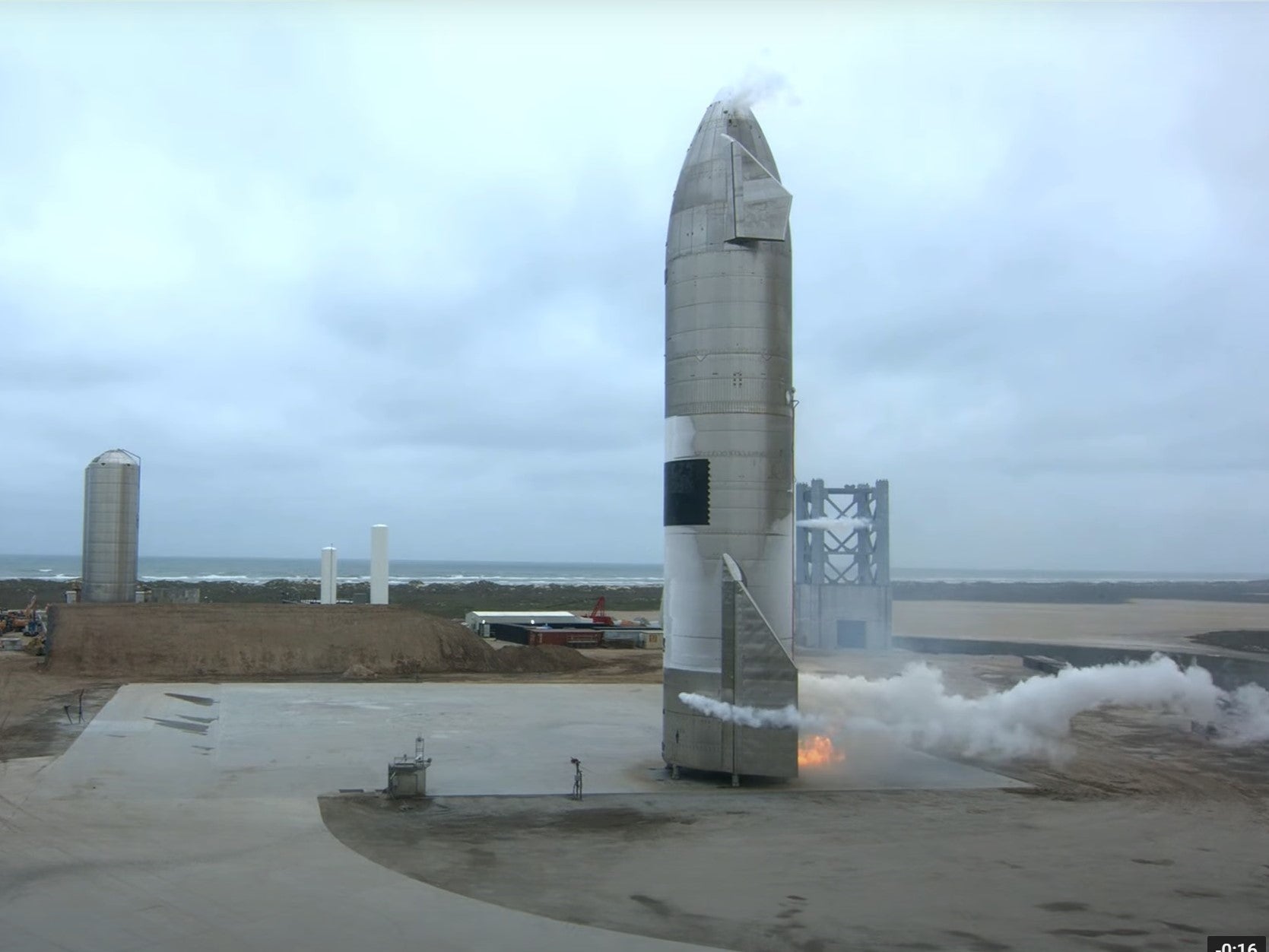SpaceX to miss Starship launch deadline due to ‘environmental assessment’
FAA regulations could slow down testing of Mars-bound rocket

SpaceX is unlikely to meet its July deadline for performing the first ever orbital flight of its Mars-bound Starship rocket, according to reports.
Elon Musk’s space firm said earlier this year that the milestone launch would take place “by July”, in order to keep up with a rigorous testing schedule aimed at achieving the technology billionaire’s ambition of reaching Mars this decade.
An ongoing environmental review could delay this, CNN reported on Wednesday, with the Federal Aviation Administration (FAA) potentially requiring an updated Environmental Impact Statement from SpaceX before it is able to grant a license.
An orbital test is the next major step in the development of the Starship craft, having previously only completed high-altitude flights lasting less than 10 minutes.
Only one of these – Starship SN15 – landed successfully without exploding.
The 90-minute orbital test would see the next-generation rocket launch from SpaceX’s Starbase facility in Boca Chica, Texas, before landing off the coast of a Hawai'ian island.
A filing with the Federal Communications Commission posted last month revealed more details about the orbital flight plan. It involves placing the 50m Starship craft on top of an 80m Super Heavy Booster, which will detach shortly after take-off.
The flight will take place at some point between 20 June and 20 December 2021, according to the FCC filing.
SpaceX landed a multi-billion dollar contract with Nasa earlier this year to use Starship crafts to deliver astronauts to the Moon as part of the US space agency’s Artemis programme.
This is scheduled to take place at some point in 2024, while tickets for a have already been sold for a commercial flight that would take passengers around the Moon as early as 2023.
Mr Musk previously stated 2024 or 2026 for the first crewed missions to Mars, though the first of these dates looks optimistic. Eventually, the technology billionaire wants to establish a self-sustaining colony on Mars by 2050.
Join our commenting forum
Join thought-provoking conversations, follow other Independent readers and see their replies
Comments


Bookmark popover
Removed from bookmarks